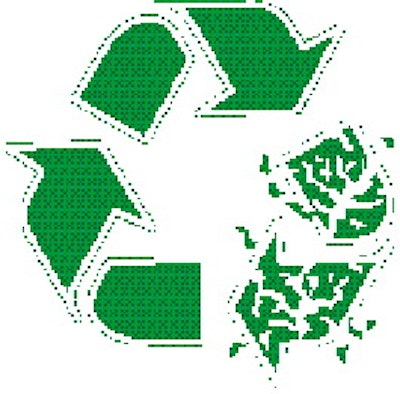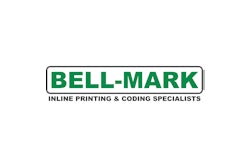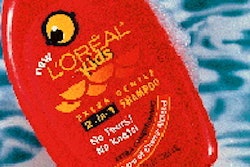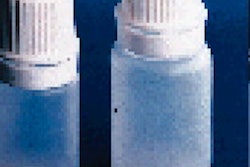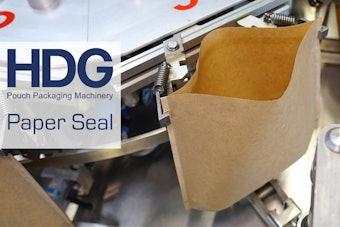Has the environment faded from the radar screen of U.S. consumers? When it comes to recycled-content plastic packaging, many packagers think it has. State laws mandating recycled content have largely receded, and environmentalists seem to have focused their energies elsewhere besides packaging. And unlike five years ago, recycled resin today is viewed by packagers as a commodity, to be used only when it's cheaper than virgin. In what might be considered a sign of the times, no one in the soft drink industry-which accounts for the largest market for polyethylene terephthalate packaging-is currently using recycled PET (RPET) in the U.S. Yet at the same time, some visible household names-including Procter & Gamble, Clorox, Heinz, Veryfine and DowBrands-continue to "close the loop" by using recycled content in their plastic packaging, and many declare it on their label. Why do some packagers continue to use post-consumer resin? Why do others remain on the sideline? No plans to cut back Marketing behemoth Procter & Gamble is indisputably the largest buyer of recycled plastics in the U.S. for packaging. The Cincinnati, OH-based company used just over 50 million lb of recycled plastic last year, most of it recycled high-density polyethylene (RHDPE). "We are still very committed to the incorporation of PCR in our packages," says Margaret Gerber, environmental specialist in environmental quality. (Gerber, along with Dr. Robert J. Shimp, replaced P&G's well-known but newly retired environmental guru Tom Rattray, last year.) "Historically we have increased the amount of PCR plastic that we've used every year," says Gerber. "We don't have plans to cut back." Gerber says the percentage of PCR varies in P&G containers anywhere from 25% to 100%, depending on a variety of factors. "A lot of it has to do with the coloring of the packages and the need for stress-crack resistance," she explains. "For some products, we need to keep that virgin layer next to the product. Why use PCR? "It's what our consumers want," says Gerber. "And we haven't had to charge consumers a premium for our packages or our products because PCR has basically stayed in line with virgin resin pricing." Another big name in the household products area, Oakland, CA-based Clorox, is also bullish on recycled-content plastic packaging. The company currently uses 30 million lb/yr of RHDPE in its packaging for laundry and cleaning products. "We're continuing our efforts to find ways to incorporate more and more recycled material," says Terry Bedell, who handles environmental issues for Clorox. "As you move upwards from 25 towards 50 [percent recycled content], it gets harder, and the operating window on your molding equipment starts to shrink." (For more on Clorox's conversion to 25% PCR for its household cleaning products, see Packaging World, April '97, p. 26.) The company also uses 3 million lb/yr RPET, mainly for its Pine-Sol cleaner, which today incorporates 50% post-consumer resin. "At one point we were using 100 percent, but there was too much variability and a lot of scrap," says Bedell. Although the environment is important at Clorox, so is price. "If the cost of recycled material doesn't stay at an attractive rate, we will ease up our use of it," says Bedell. "We would try to avoid backing away completely." A third major user of recycled resin is Indianapolis, IN-based DowBrands. It has used 25% PCR in all its plastic packaging since 1993 when it converted over to comply with state laws at the time, according to Tim Millar, packaging director. He estimates DowBrands uses 3 to 4 million lb of RHDPE per year. Millar acknowledges a slight cost savings due to RHDPE, but indicates DowBrands would likely continue to use the recycled resin even if its price exceeded that of virgin resin. "We've worked real hard in our plants and with our processes to be able to run it. We've already gone through several cycles when the price of PCR has exceeded virgin. I don't see us shying away from it." Food, too In the beverage area, Veryfine, Westford, MA, is the poster child of RPET beverage packaging, standing as one of the few users for beverages. When its bottles containing recycled resin debuted a few years ago, it was one of the first commercial applications for Continental PET's (Florence, KY) multilayer technology. The process sandwiches RPET between two layers of virgin resin, with a layer of ethylene-vinyl alcohol (EVOH) on each side of the PCR for oxygen barrier. The packaging is also hot-fillable, a requirement for Veryfine's products. Today, says Bill Lindsey, Veryfine's environmental affairs manager, "we're full-steam ahead." The company uses the multilayer technology for all of its plastic juice and juice drink containers and in all of its sizes (8, 16, 20, 32, 46 and 64 oz), save for gallons. Post-consumer content for each of these packages is 35%. The company reports using 1.2 million lb/yr of RPET. One exception is Veryfine's Balsams Spring(TM) brand of bottled water. "Water's a very competitive market" with very low price points, observes Lindsey. "We haven't found a bottle yet [that permits economic use of RPET] but we are constantly looking." Lindsey says Veryfine uses PCR "because it's the right thing to do." Another user of Continental PET's multilayer technology is Heinz USA, Pittsburgh, PA. The company has converted 90% of its ketchup bottles to multilayer bottles incorporating 35% RPET. Heinz's bottles consume "in the millions of pounds" annually of RPET, says Alan Skeddle, general manager of packaging technologies. Like Veryfine, the Heinz bottles contain EVOH. Skeddle says Heinz "did a lot of tests with a lot of recyclers to prove that you could separate the EVOH out and come out with very clean PET." Heinz moved into RPET mainly to meet content requirements in California and Oregon. Like many packagers, once food and beverages were exempted from California's requirements last fall, Heinz was left holding the bag. But unlike most packagers who quietly dropped the bag and tiptoed away, Heinz decided to continue its conversion. Says Skeddle: "The good news is that, at least for us, regardless of where the regulations go in the next five years, we're prepared to meet that requirement [of recycled content]." On the cost side, Skeddle says that multilayer bottles allow Heinz to "manage virgin resin cost swings over time. As virgin resin goes up, the [lower cost of] PCR keeps the total cost in balance." A straight comparison of multilayer bottles to monolayer virgin wouldn't be fair, Skeddle points out, because the multilayer bottles contain the EVOH barrier layers. But not soft drinks Two big users of PET who are absent from the above list are Coke and Pepsi. The irony is that both companies popularized the idea of recycled-content PET packaging in the U.S. in the early 1990s. They incorporated repolymerized resin into monolayer bottles. However, the soft drink giants found the resin too expensive over the long haul. Pepsi withdrew its PCR bottles from the U.S. market after 12 months. Coke says it stopped using RPET in the U.S. in late '93. Today, Pepsi doesn't use recycled resin in any of its bottles anywhere in the world, though it says it's evaluating new technologies. Coke doesn't use RPET in the U.S., but it does in several overseas markets, including Australia, New Zealand, Saudi Arabia and parts of Europe, in part to comply with local mandates for recycled content. Coke acknowledged it uses Continental PET's multilayer technology in several overseas markets. Why not use it in the U.S.? "Multilayer technology tends to have limitations as to its production capability," says Carol Martel, spokesperson for the Coca-Cola Co., Atlanta. "There are specific capacity restrictions for the machines that are used to make the preforms," she says. Those volume constraints preclude its use in the U.S., says Martel. Like Pepsi, Coke too says it's evaluating RPET technologies that are appropriate to the U.S. In fact, Martel acknowledges that a monolayer bottle using new PCR technology that Coke has been developing with one supplier has been submitted to FDA for a letter of non-objection. "We don't know whether that process will be approved, and we don't know how it will pan out with field testing," cautions Martel, but "we believe [it] has promise." Martel declined to identify the supplier, but it could be Plastipak (Plymouth, MI). The company already has its own multilayer technology, but a spokesman told Packaging World separately that it has applied for an FDA letter of non-objection for a monolayer food-contact RPET bottle that it has developed. No premium paid for PCR Suppliers of recycled-content resin and containers report that the message from most packagers is loud and clear: Unless it's used for marketing purposes, PCR is a commodity that, like any other, will only be used if it's cheaper or the same as virgin. "We would like to see the economics of recycled content as close to virgin materials as possible," says Coke's Martel. She says in the various European markets where Coke uses PCR, its cost is "at or below" that of 100% virgin bottles. This was also the case in Australia until very recently, says Martel, when the price of all-virgin containers dropped below those made with recycled resin. She says for the time being, the company is continuing to use PCR in Australia. Sal Porrazzo, a 40-year Pepsi veteran who now consults for the company in the environmental area, says, "We certainly would like to see [recycled resin] in PET. But it has to be cost-feasible, too. And we haven't found that system yet." The price issue has been thrown into sharp relief in the past six months (see graphs), with a glut of virgin PET forcing prices down by 40% to a historic low, dragging down RPET along with it. "No commodity resin's ever done that before," says Floyd Flexon, director of recycling worldwide at Schmalbach-Lubeca's (formerly Johnson Controls, Inc.) Novi, MI, recycling facility. "Recycling gets the first bash in the teeth when you hit market conditions like this." The price drop was triggered by a glut of virgin resin in the U.S. market due to a build-up in plant capacity by virgin resin producers. Those companies had responded to strong demand for PET resin two years ago; that demand kept prices high. Today, the story is quite different. Since packagers aren't willing to pay a premium, low virgin resin prices means that recycled resin producers must price their wares even lower. With unpredictable costs of buying baled bottles and fixed costs for grinding them into flake and repelletizing, it puts the squeeze on suppliers of recycled-content packaging materials. The pricing pressure is even more intense for some suppliers of food-grade RPET resin or bottles, who in some cases must bear additional costs to make the material safe for food contact. One example is Schmalbach-Lubeca's Supercycle(TM) resin. Two years ago when the price of virgin PET was high, Supercycle, produced by a mechanical flake washing process, was cheaper than both repolymerized and virgin resin. Today, the company has halted the mechanical wash line because Flexon says he's unable to compete with virgin PET. However, virgin resin prices increased in April, and Flexon says current plans are to restart the wash line this summer. Other RPET suppliers are also quietly commercializing technologies for food-grade PET containers that they are hoping will be competitive with containers made from virgin resin. Plastipak is currently testing the first commercial application of its multilayer technology with an unidentified customer who is using 80% post-consumer resin on the outside and 20% virgin on the inside. And as mentioned previously, the supplier is also seeking to commercialize a monolayer RPET bottle this year. Wellman, which claims to be the largest recycler of PET bottles in the country, planned to introduce a new recycled resin at the National Plastics Exposition (NPE) in Chicago in June. Produced by its Day Products Div. (Bridgeport, NJ), that resin recently won an FDA letter of non-objection for food contact. A spokesman for Wellman says bottles made with the resin are currently being tested by an unidentified soft drink company. But the fact remains that the lion's share of food and beverage packagers in PET have yet to bite on recycled. Today, most RPET in packaging is finding its way into non-food containers, which account for only 5% to 10% of the PET container market, according to Flexon. Nevertheless he acknowledges that "the expansion [of recycled resin sales] in non-food has been significant, and that's partly kept what's still around in business." On the HDPE side, PCR is still cheaper than virgin, but the gap has been narrowing. Graham Recycling, a unit of the Graham Cos., a large bottle molder, sees a possibility for recycled resin prices to exceed the price of virgin resin sometime this year. If that happens, it isn't clear whether customers will continue using PCR, says Gerry Claes, general manager of Graham Recycling. "Five years ago [even when RHDPE cost more than virgin], there was a legislative incentive [still] to use it. I don't see that incentive now." Laws defused If price is one of the great determinants of whether packagers use PCR, Claes alludes to the other: state laws that mandate recycled content. In the last few years, those laws have been significantly repealed or weakened, including last fall's exemption of food, drug and cosmetics packaging from California's rigid plastic container law. For the remainder of rigid plastic containers in that state, they are subject to an annual minimum consumer recycling threshold of 25%; in 1995 the amount of recycled plastics barely exceeded 25%, which relieved packagers from meeting mandated content requirements. But the American Plastics Council, which conducts an annual survey of recycling rates that was due out just before PW went to press, has hinted that rates will probably drop for 1996, which could trigger the requirements once again. And Oregon's plastics recycling rate has been well above its 25% minimum threshold for some time, exempting individual packagers from using PCR. The only other state law on the books is Wisconsin's 10% recycled-content mandate, and even that allows packagers to count plant scrap as part of the recycled content. As the laws receded, a lot of packagers did an about-face on the recycled-content issue. "A lot of our clients were ready to put it in tons of products, had approval, and ran tests," says Victor Bell, a consultant with Science Applications Intl. Corp.'s (SAIC) environmental packaging team (Newport, RI), which advises companies on compliance with packaging legislation. "But as soon as California faded, they faded." But the issue is far from dead. Next month, this report concludes with a discussion of how packagers who are committed to PCR justify its use, even in down markets. The report will also look at label claims and consumer complacency, threats of new legislation and the potential return of environmental activism in packaging.
